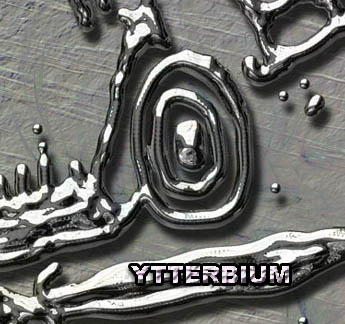
Photo retrieved fromhttps://www.easycalculation.com/chemistry/elements/ytterbium.html
- Ytterbium is a chemical element with chemical Yb and atomic number 70 with an atomic weight of 173.05.
- Ytterbium was discovered by Jean Charles Galissard de Marignac, a Swedish chemist, in 1878.
- Ytterbium is a rare earth element.
- Ytterbium has a bright silvery luster, is soft, malleable, and quite ductile.
- Ytterbium is the fourteenth and penultimate element in the lanthanide series.
- Because of its closed-shell electron configuration, its density and melting and boiling points differ from those of the other lanthanides.
- Melting point and boiling point of Ytterbium element are 824°C and 1196°C respectively.
-Ytterbium is a soft, silvery metal.
- Ytterbium slowly oxidises in air, forming a protective surface layer.
- Density of Ytterbium is 6.90 (g cm−3).
- Ytterbium dissolves rapidly in mineral acids.
- Ytterbium is beginning to find a variety of uses, such as in memory devices and tuneable lasers.
- Ytterbium can be alloyed with stainless steel to improve some of its mechanical properties and used as a doping agent in fiber optic cable where it can be used as an amplifier.
- Under very high physical stress Ytterbium’s electrical resistance increases by an order of magnitude. Ytterbium is therefore used in stress gauges to monitor ground deformations caused by earthquakes or underground explosions.
- Ytterbium can also be used as an industrial catalyst and is increasingly being used to replace other catalysts considered to be too toxic and polluting.
- Ytterbium has no known biological role. It has low toxicity.
- One of ytterbium's isotopes is being considered as a radiation source for portable X-ray machines.
- Ytterbium compounds are capable of absorbing light in the near infra red part of the electromagnetic spectrum, which has been exploited to convert radiant energy into electrical energy in devices coupled to solar cells.
- Ytterbium, definitely an interesting and fascinating element with many uses as diverse as atomic clocks and solar cells and definitely different from the other lanthanides.
Posted by Direniş ÇAYLI on December 23, 2016 https://nanografi.com/blog/from-village-to-periodic-tableytterbium/
Comments
Post a Comment